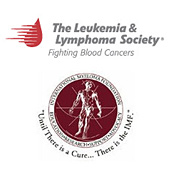

How to Baby Proof Your Home
 A home can be a very dangerous place for babies, toddlers, and young children. They can drown in a pool, bathtub, or even the toilet. They can be burnt by a fireplace, barbecue, stove, from matches, or even hot water. They can be injured by sharp objects, falls, or by furniture tipping over and falling on them. They can swallow poisons. They can electrocute and strangle themselves. There are so many ways that babies and toddlers can be hurt in the house. How can you protect them from the hazards found in almost every home? Here are some suggestions:
A home can be a very dangerous place for babies, toddlers, and young children. They can drown in a pool, bathtub, or even the toilet. They can be burnt by a fireplace, barbecue, stove, from matches, or even hot water. They can be injured by sharp objects, falls, or by furniture tipping over and falling on them. They can swallow poisons. They can electrocute and strangle themselves. There are so many ways that babies and toddlers can be hurt in the house. How can you protect them from the hazards found in almost every home? Here are some suggestions:
Drowning Hazards. Install a cover over your pool and install a fence or wall around the pool. If the door to the pool is left open or ajar, the pool cover will protect your child; if the cover isn’t working or is left open, the fence or wall will protect your child. Install doors around bathtubs and install a child-safe lock on the doors. Also install child-safe locks on all toilets.
Never leave a baby alone in a pool or bathtub. They can drown in just a few inches of water in a matter of seconds. If the phone rings, let the machine get it or buy a cordless phone and bring it to the bath.
Fire and Burn Hazards. Install a screen in front of the fireplace and put a child-safe lock on it. Do not leave a barbecue unattended, especially the kind that stands on legs that can tip over. Do not leave any stools near the stove for toddlers to climb on. When cooking on the stove, use the back burners as they are more difficult for curious children to reach. Install locks on ovens. Turn down your hot water heater to 120̊F. Keep matches and lighters locked up high. Install smoke detectors in every room of the house and also install carbon monoxide detectors.
Fall Hazards. Install gates at the top and bottom of all staircases. Install hard plastic along railings of indoor and outdoor stairwells and along all balconies. Secure all dressers, tables and bookcases to walls so they will not tip over when children climb on them. Secure televisions to walls so they can’t fall over. Keep ladders and multi-step stools secured to walls in the garage.
Sharp and Contact Hazards. Keep all knives out of the reach of children, preferably in cabinets high up which are locked. Install plastic guards on the corners of tables, furniture, and other hard objects. Secure all cabinet doors with childproof locks, but fill one cabinet at floor level with pots and pans that are safe for a baby to play with and leave this cabinet unlocked.
Electrical Hazards. Install child-proof electrical plate covers or install plastic plugs in unused electrical outlets. Place electric-powered appliances away from sinks and bathtubs. Be sure all electric appliance cords are not frayed, loose or damaged, and are away from water.
Stangulation Hazards. Roll up cords for blinds into closed plastic protectors. Keep all rope and string locked up in the garage. Remove drape cords and check for strangulation hazards.
Toxic Hazards. Store all pesticides, flammable materials, and infrequently used toxic chemicals in a fire safety cabinet outside of the house. Put all cleaning and laundry chemicals in cabinets up high out of children’s reach and install locks on the cabinets. Also lock up any liquor.
Choking Hazards. Remove all objects that are small enough to fit inside an infant’s mouth. Remove refrigerator magnets as they can fall off the refrigerator and pose a choking hazard.
Unsafe Rooms. If you don’t baby-proof the entire house, lock doors of any no-access rooms and install a gate outside the entryway just in case the door is inadvertently left unlocked.



